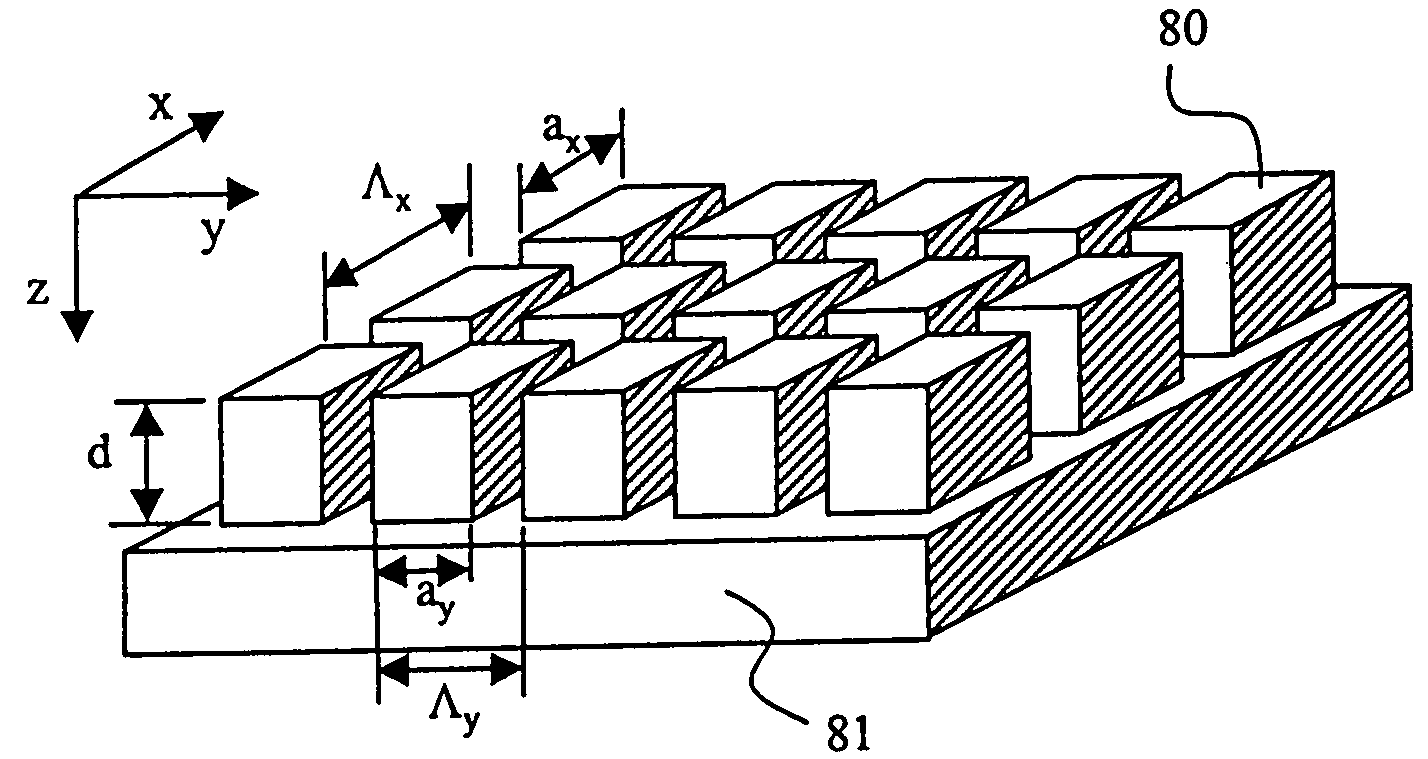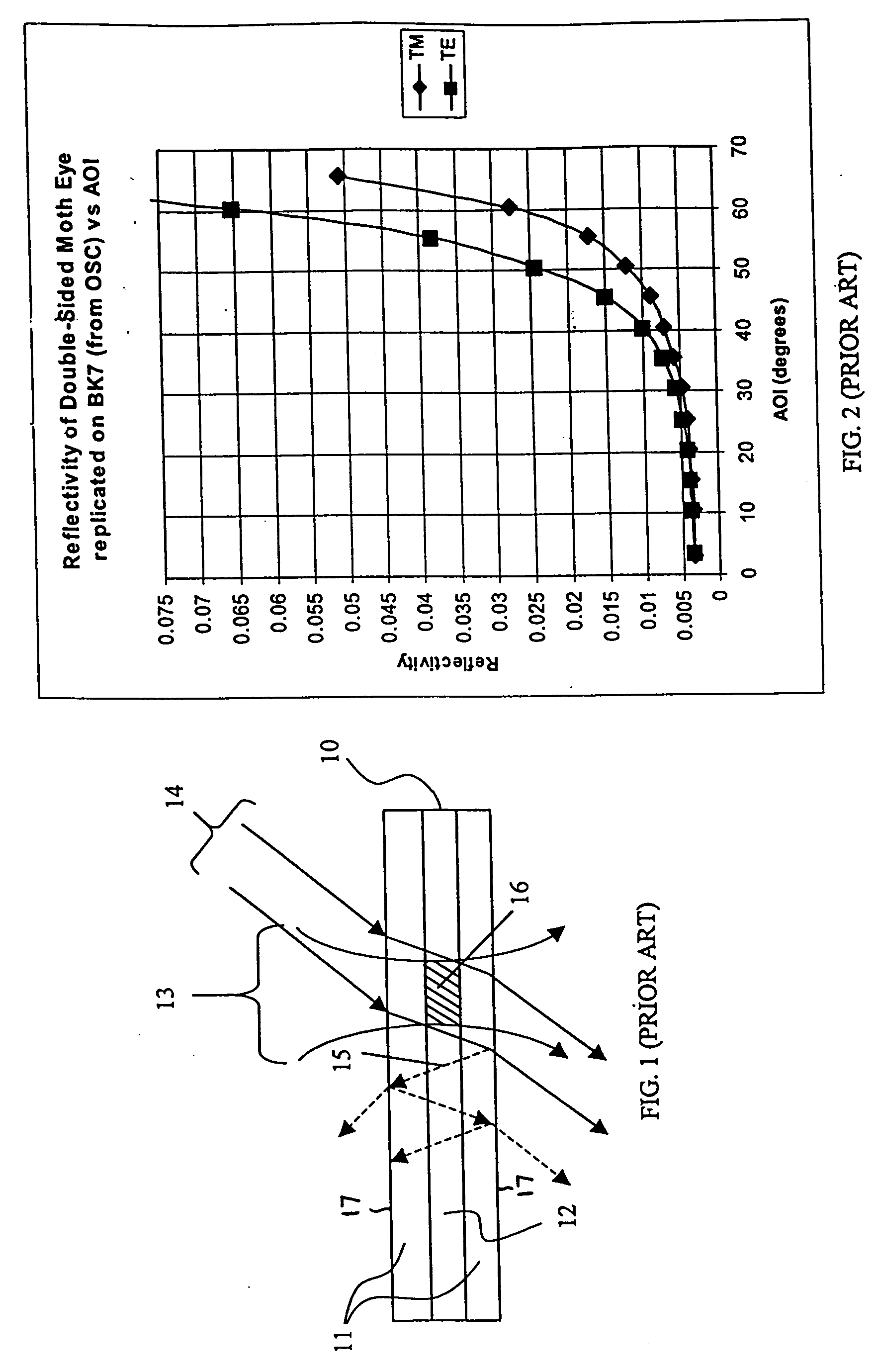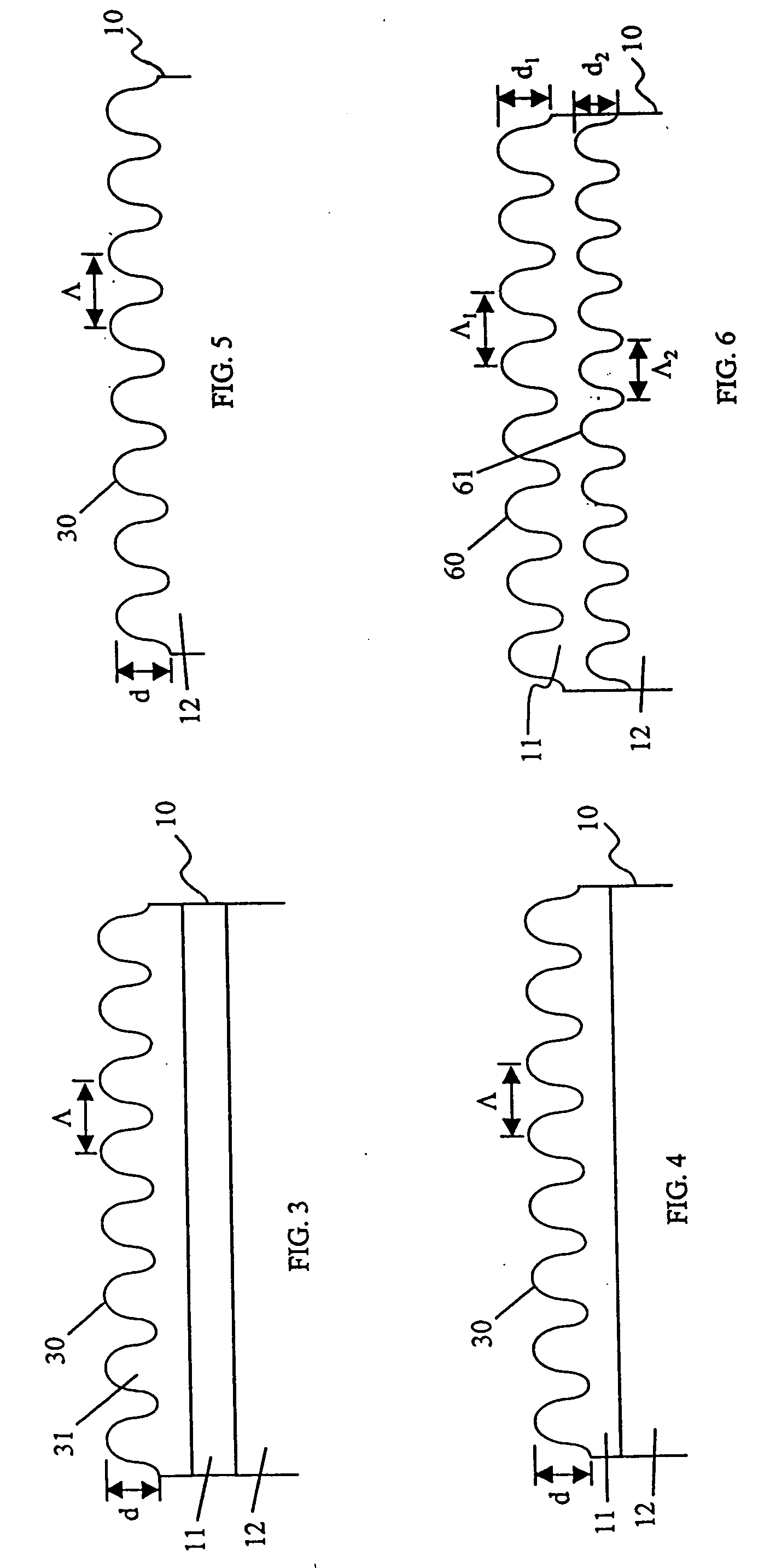Holographic data storage media with structured surfaces
a data storage media and structured surface technology, applied in the field of holographic data storage media, can solve the problems of scattered light, significantly lower intensity, and the inability of a dvd or cd device to record erroneous bits in the phase-change material of a dvd or cd, and achieve the effect of reducing fresnel reflections
- Summary
- Abstract
- Description
- Claims
- Application Information
AI Technical Summary
Benefits of technology
Problems solved by technology
Method used
Image
Examples
first embodiment
[0031]FIG. 3 shows holographic media 10 in which an ARS surface 30 is applied to an external surface of the holographic media 10 such that it is placed on top of the substrate 11 adjoining or encapsulating the photosensitive material 12 of the media. The substrate 11 may be of glass, or plastic, such as polycarbonate or other polymer materials. For example, the substrate may be 0.6 mm thick, and the photosensitive material 0.5 mm thick. This ARS surface 30 is fabricated from a material 31 that is different from the substrate 11, but preferentially has an index of refraction that approximately matches in order to minimize reflections at that surface.
[0032] The structures of the ARS surface may be on other external surfaces as shown in FIGS. 4 and 5. FIG. 4 shows a second embodiment of holographic media 10 in which an ARS surface 30 is applied directly into the substrate 11 that adjoins photosensitive material 12 of the media. FIG. 5 shows a third embodiment of holographic media 10 in...
fourth embodiment
[0033] The ARS structures may be applied to both an external surface, as well as an internal surface of the holographic media 10. For example, FIG. 6 shows holographic media 10 in which an ARS surface is provided on an external surface 60 on substrate 11, and another ARS surface is provided on an internal surface 61 on the photosensitive material 12 of the media. The grating period Λ1 and depth d1 of the ARS features of the external surface 60 need not match those (Λ2 and d2, respectively) of the ARS features of the internal surface 61. The ARS surfaces of FIG. 6 may be achieved by having structures with orthogonal dimensions Λ1 and Λ2 that are smaller than the operation wavelength(s) of the HDSS, and in general the depth d is smaller or on the order of the incident wavelength.
[0034] As an illustrative example of the holographic media 10 of the fourth embodiment, consider the case in which the media has a photosensitive material suitable for holographic recording is to be encapsulat...
PUM
| Property | Measurement | Unit |
|---|---|---|
| angles of incidence | aaaaa | aaaaa |
| reflectivity | aaaaa | aaaaa |
| grating period | aaaaa | aaaaa |
Abstract
Description
Claims
Application Information
 Login to View More
Login to View More - R&D
- Intellectual Property
- Life Sciences
- Materials
- Tech Scout
- Unparalleled Data Quality
- Higher Quality Content
- 60% Fewer Hallucinations
Browse by: Latest US Patents, China's latest patents, Technical Efficacy Thesaurus, Application Domain, Technology Topic, Popular Technical Reports.
© 2025 PatSnap. All rights reserved.Legal|Privacy policy|Modern Slavery Act Transparency Statement|Sitemap|About US| Contact US: help@patsnap.com



